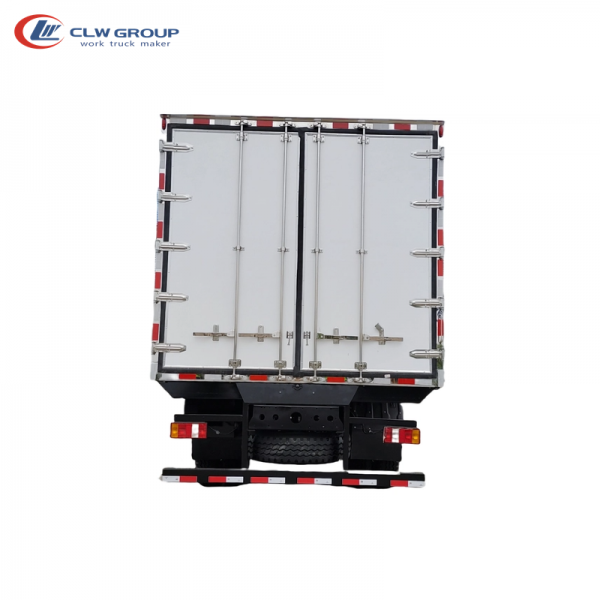Elevating the Standard A Comprehensive Guide to Truck Mounted Crane Industry Standards

Introduction
The truck mounted crane industry plays a crucial role in various sectors such as construction, transportation, and logistics. These versatile machines are used to lift and move heavy loads with precision and efficiency. To ensure the safety and reliability of truck mounted cranes, industry standards have been established to govern their design, manufacturing, operation, and maintenance. In this comprehensive guide, we will delve into the key standards that regulate the truck mounted crane industry, highlighting their importance and impact on safety and performance.
1. Overview of Truck Mounted Cranes
Truck mounted cranes, also known as boom truck s or mobile cranes, are specialized vehicles equipped with a crane mounted on a truck chassis. These cranes are highly versatile, allowing for mobility and flexibility in lifting and moving heavy loads in various work environments. Truck mounted cranes come in different sizes and configurations to meet the specific needs of different industries and applications.
2. Importance of Industry Standards
Industry standards serve as guidelines and benchmarks that ensure the quality, safety, and performance of truck mounted cranes. These standards are developed and maintained by industry organizations, regulatory bodies, and standards-setting agencies to promote uniformity and consistency in the design, manufacturing, operation, and maintenance of cranes. Compliance with industry standards is essential to mitigate risks, prevent accidents, and enhance the overall efficiency and effectiveness of truck mounted cranes.
3. Key Industry Standards for Truck Mounted Cranes
a. ASME B30.5: Mobile and Locomotive Cranes
The ASME B30.5 standard, published by the American Society of Mechanical Engineers (ASME), provides comprehensive guidelines for the design, construction, operation, inspection, testing, and maintenance of mobile and locomotive cranes, including truck mounted cranes. This standard covers a wide range of crane types and configurations, addressing key safety considerations such as load capacity, stability, and lifting operations.
b. ANSI/ITSDF B56.1: Industrial Crane Standards
The ANSI/ITSDF B56.1 standard, developed by the Industrial Truck Standards Development Foundation (ITSDF) and accredited by the American National Standards Institute (ANSI), sets forth safety requirements and best practices for industrial cranes, including truck mounted cranes. This standard covers aspects such as design, testing, maintenance, and operation of cranes to ensure safe and efficient performance in industrial settings.
c. OSHA Regulations
The Occupational Safety and Health Administration (OSHA) in the United States has established regulations and guidelines that govern the safe operation of cranes, including truck mounted cranes. OSHA regulations cover various aspects of crane safety, such as operator training and certification, crane inspections, load handling, and working near power lines. Compliance with OSHA regulations is mandatory for ensuring workplace safety and preventing accidents.
d. ISO Standards
The International Organization for Standardization (ISO) has developed a series of standards related to cranes and lifting equipment, including truck mounted cranes. ISO standards cover a wide range of topics such as design, testing, maintenance, and safety requirements for cranes used in different industries and applications. Compliance with ISO standards helps manufacturers and operators ensure the quality and reliability of truck mounted cranes on a global scale.
4. Safety Considerations and Best Practices
In addition to complying with industry standards, operators and organizations involved in the use of truck mounted cranes should adhere to safety considerations and best practices to mitigate risks and prevent accidents. Some key safety considerations and best practices include:
- Operator training and certification: Ensure that crane operators are properly trained, certified, and experienced in operating truck mounted cranes safely and effectively.

- Pre-operational inspections: Conduct thorough pre-operational inspections of the crane, including checking for any signs of damage, wear, or malfunction that could affect its safe operation.
- Load capacity and stability: Always adhere to the crane's load capacity limits and ensure proper load securement to maintain stability during lifting and moving operations.
- Working near power lines: Maintain a safe distance from power lines and follow electrical safety guidelines to prevent electrocution hazards while operating truck mounted cranes.
- Regular maintenance and servicing: Implement a proactive maintenance program to keep the crane in optimal working condition, including regular inspections, lubrication, and component replacements as needed.
5. Future Trends and Innovations
The truck mounted crane industry is continuously evolving with advancements in technology, design, and performance. Future trends and innovations in the industry are focused on enhancing safety, efficiency, and sustainability of truck mounted cranes. Some notable trends and innovations include:
- Integration of IoT and telematics: Incorporating Internet of Things (IoT) technology and telematics systems in truck mounted cranes to enable real-time monitoring, data analytics, and predictive maintenance for improved performance and uptime.
- Electric and hybrid crane models: The development of electric and hybrid-powered truck mounted cranes to reduce emissions, noise pollution, and operating costs while maintaining high lifting capacities and performance levels.
- Automation and remote operation: Implementing automation and remote operation features in truck mounted cranes to enhance operator safety, productivity, and efficiency in lifting and moving operations.
- Lightweight materials and design optimization: Utilizing lightweight materials and design optimization techniques to improve crane efficiency, maneuverability, and fuel economy without compromising strength and durability.
6. Conclusion
The truck mounted crane industry standards play a vital role in ensuring the safety, reliability, and performance of these essential machines in various industries and applications. By adhering to industry standards, operators and organizations can mitigate risks, prevent accidents, and enhance the overall efficiency of truck mounted cranes. Continuous compliance with industry standards, coupled with safety considerations, best practices, and future innovations, will drive the evolution of the truck mounted crane industry towards safer, more efficient, and sustainable practices.
